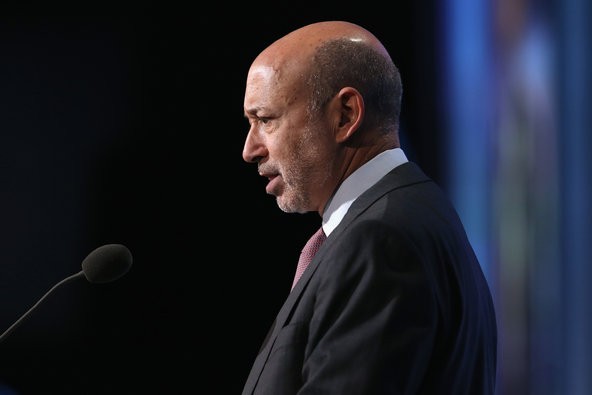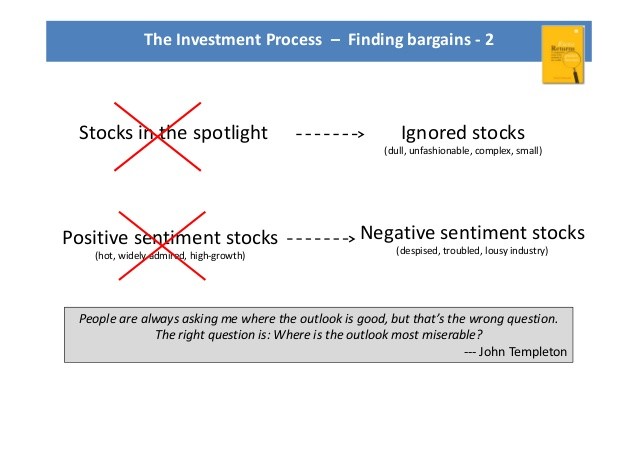Finding Profit In Troubled Stocks
Post on: 14 Май, 2015 No Comment

Finding Profit In Troubled Stocks
Contrarian investors will tell you that the biggest profits come from buying beaten down stocks that eventually turn around. But investing in companies that have seen their share price plummet can be tricky and full of risk; after all, a lot of companies that fall down never get back up.
Spotting a troubled company with the potential to right itself can indeed be profitable. Consider Hilton Hotels (HLT). In late 2001, terrorism fears had an adverse effect on the travel and hotel industries. Its stock value collapsed. But this proved to be a superb time to buy Hilton stock. Within a year, Hilton management turned the company around. As we can see in the chart below, between the end of 2001 and 2004, Hilton stock delivered more than 250% return to investors. On Dec 31, 2001, HLT closed at only $10.92. Three years later, on Dec 31, 2004, HLT was trading at $22.74.
Then again, troubled companies can also spell trouble for investors. The same terrorism fears that knocked down Hilton also hit UAL, the parent of United Airlines. But the airline was unable to make a turnaround, and UAL declared bankruptcy in 2002. Its investors were left with worthless shares. While the stock continues to trade on the OTCBB. its value has been crushed.
Investing in troubled companies requires careful analysis to distinguish the stocks that will rise again from those that will never move off the bottom. Here are a few guidelines that can help you separate temporarily troubled stocks from the permanently down-and-out.
Diagnosis
When analyzing companies that have seen their share price plunge, start by identifying the problem(s) facing the company. Normally, there are two sources of trouble:
1. Poor operating performance, resulting in a downturn in earnings or cash flow. When assessing operating results, turn to the company’s income statement and cash flow statements. Revenues. operating income and operating cash flow that decrease quarter after quarter are strong signs of operating weakness.
2. Stretched financial position, resulting in excessive debt. You can find out about a company’s debt level, or leverage. from its balance sheet. Escalating debt levels are rarely a promising sign. The debt-to-equity ratio offers one of the clearest pictures of a company’s leverage. (To learn more about the debt-to-equity ratio, see [i] Debt Reckoning [/i].) The debt-equity formula is straightforward:
Debt-to-Equity = Total Liabilities / Shareholder Equity
A high debt-to-equity ratio translates into higher risk for shareholders.
It is possible for a troubled company to have a reasonably solid balance sheet, while its operating results experience a serious decline. This was the situation at Hilton. While the company’s debt-to-equity level remained in the normal range for hoteliers, its earnings shrank over several quarters after Sept 11, 2001.
By contrast, UAL suffered from a combination of poor operating performance and excessive debt. Long-term debt at UAL was $700 million at the end of 2002 with accounts payable equal to $4 billion. Its 2002 cash and cash equivalents of $1.3 billion were absorbed by interest expenses and accounts payable. Its continued poor operating performance as a result of the downturn following Sept 11, 2001, meant lower revenue and an inability to finance debt.
Prognosis
Once the problem has been spotted, you’ll want to know whether the company has the wherewithal to overcome it. Does the company have the financial strength to survive until it can turn itself around?
As Hilton’s experience shows, poor operating performance can be remedied, provided the company has sufficient cash and assets on its balance sheet to tide it over while it is making a turnaround.
Going back to Hilton’s Q4 2001 balance sheet, the company had $35 million cash, giving management the time and flexibility to survive the industry-wide downturn and reorganize its business. At the time, Hilton owned valuable real estate that offered a cushion against cash flow strains due to the revenue slump. Although you won’t find brand assets listed on the balance sheet, the Hilton brand name is likely to have given it a competitive advantage. The sale of some of the company’s less profitable properties also provided some cash flow to help make ends meet.
A weak balance sheet can be remedied too, provided the company’s business is still viable. Troubled companies with strong core businesses are almost always restructured, by using cash flow from operations to pay down debt.
But if the company suffers from both anemic operating performance and a flimsy balance sheet, like UAL, a turnaround is much tougher to accomplish. The company had to grapple with not only a severe slump in air passenger traffic in the wake of Sept 11, 2001, but also a slowing domestic economy amid rising costs and increased competition. Looking at UAL’s income statements after 2000, you’ll notice falling revenues and a string of deepening quarterly losses. UAL’s balance sheets over the same period point to mounting debt levels.

Price Matters
Valuation is critical when contemplating investing in beaten down stocks. Remember, there is a big chance that a turnaround may never come, so it’s always best to identify stocks that are trading well below their net asset value (NAV). Book value offers one of the simplest and safest methods for valuing stocks that have seen their share price tank.
The book value, or NAV, roughly represents what shareholders would receive if the company were liquidated. When a stock trades at a price less than its book value, the market is essentially saying that the company is worth more broken up and sold off than as a single operating business. So, buying a troubled stock at less than book value minimizes your investment risk. The formula for calculating book value is:
Book Value = Assets – Liabilities
Bankruptcy Beware
As a general rule, you should steer clear of companies that are in the process of filing or that have filed for bankruptcy. The bankruptcy process can be very complicated. If you’re a shareholder, what you need to know is fairly simple: holders of common shares go to the bottom of the list of creditors when the assets of a corporation get divvied up in Chapter 11 or Chapter 7 liquidations. (For further reading, see An Overview of Corporate Bankruptcy .)
To be sure, a company can emerge from bankruptcy stronger — and more profitable. But the new company will issue new stock, so any stock purchased before it emerges from bankruptcy usually has no value. Moreover, the information flow from companies in bankruptcy proceedings can be very unreliable.
Conclusion
You can never know for sure whether a pummeled or troubled stock will ever recover. However, there are some ways of distinguishing those companies that will make a turnaround from those destined for the dustbin. When analyzing troubled stocks, investors should steer clear of companies with a weak balance sheet and poor operating performance.














